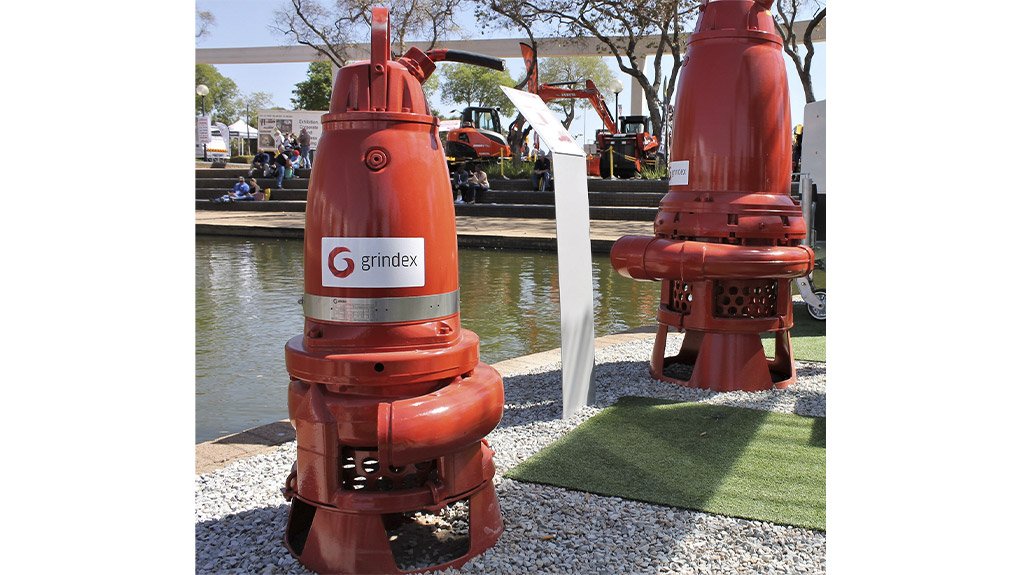

Slurry pump’s enhanced wear resistance reduces TCO


FOR TOUGH CONDITIONS The Grindex Bravo submersible slurry pump is proving its worth in slurry pumping applications, as the hydraulic components are made from Hard Iron
Pumping fluids with high solids concentrations is far more complicated than pumping water. To avoid sedimentation in the system, the correct pump size with appropriately dimensioned hoses and pipes must be selected, notes local Grindex pump distributor Integrated Pump Technology.
Adding to the complexity of pump selection for slurry applications is that the concentration of solids, together with particle size and shape, can affect pump performance as well as power requirements. Settled solids might require external agitators, water jets or mixers to get them back in suspension and allow them to be pumped, the company explains.
All these factors need to be considered when selecting the correct slurry pump for an application, and Integrated Pump Technology cautions against making this purchase decision based on capital cost alone.
“Slurry pumps need to handle abrasive solids in suspension, including sand, gravel and waste products in high-concentration,” says Integrated Pump Technology MD Colin Adams.
“Coping with the high levels of wear caused by this abrasion requires a pump with hydraulic parts manufactured from a very hard metal alloy. Selecting anything less will result in high maintenance and repair costs translating into unnecessarily high total cost of ownership (TCO).”
He adds that Grindex Bravo submersible slurry pumps are engineered to cope with the toughest pumping conditions, and the hydraulic components are made from hard iron, one of the hardest materials available.
“Countering excessive wear is important in slurry pumps and the robust construction of the Bravo pump, coupled with its low shaft speed, ensures high wear resistance even in the most demanding slurry applications,” Adams explains.
The Bravo pumps range can operate over the complete pump curve, not just on a specific duty and can handle from 30 ℓ/s up to 130 ℓ/s at a maximum head of 45 m.
The large throughlet means that the pump can handle solids of varying sizes. The pumps are equipped with a leakage sensor to facilitate early fault detection, allowing action to be taken as soon as possible.
Adams says that, with its single adjustment screw, it is simple to tweak the pump impeller ensuring optimal performance.
Pumps in the Bravo range, from the Bravo 400 upwards, are equipped with an agitator designed specifically for coarser slurries. This enables the pump to stir up and pump sand, sludge and solids in suspension.
“Our team of experienced and skilled pumps specialists can advise customers on the most appropriate pump for a particular slurry application, ensuring that the pump installation will operate at low TCO,” Adams concludes.



